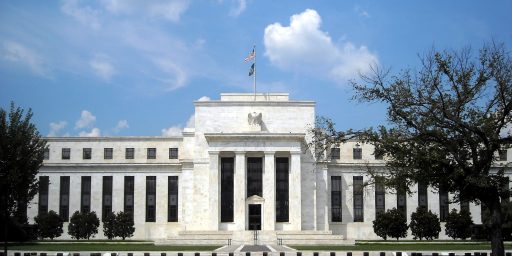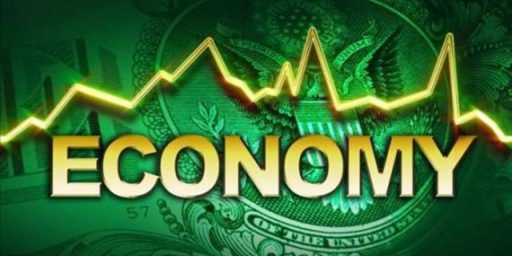Federal Reserve Raises Interest Rate 12th Quarter in Row
The Fed raised the federal funds rate another quarter point for the 12th quarter in a row, to 4 percent.
Federal Reserve Boosts Key Interest Rate (AP)
The Federal Reserve, still concerned about inflation, raised a key interest rate on Tuesday to the highest level in more than four years and signaled more increases are likely. The Fed announced it was pushing its target for the federal funds rate, the interest that banks charge each other, to 4 percent from 3.75 percent, where it had been since the Fed’s last interest-rate meeting on Sept. 20. It marked the 12th consecutive quarter-point increase since the Fed began gradually raising rates in June 2004 to make sure that a growing economy did not generate higher inflation.
Higher interest rates fight inflation by slowing economic activity. The higher rates dampen demand for such items as autos and homes. In a brief statement explaining Tuesday’s action, the Fed retained language it has been using, which said it believes future interest rates can occur “at a pace that is likely to be measured.” That phrase is seen as a signal that the Fed plans to keep raising rates at a gradual pace of quarter-point moves at coming meetings.
Tuesday’s rate hike had been widely expected, given that a number of Fed officials in recent weeks have expressed worries that the sharp rise in energy prices that occurred in early September presented the danger of more widespread inflation pressures down the road.
The Fed rate increase hike will mean increased borrowing costs for millions of Americans with commercial banks expected to follow the Fed’s quarter-point rate hike with their own quarter-point increase in the prime lending rate, which currently stands at 6.75 percent.
Anyone who has any memory at all of the 1970s understands how ravaging inflation came be. Still, the evidence that the economy is somehow on fire and needs to be put out is hard to see.
Almost all of the “inflation” we are currently seeing is in energy prices, construction materials, and housing costs. The first two are mostly due to natural disasters and increased foreign demand. Only the last is likely to be responsive to changing interest rates–and then at a much greater risk of turning the much forecast “housing bubble” into a self-fulfilling prophecy.




Construction material was going up long before the disasters hit. The construction market is overheated, and really could use a breather….
But it’s not like these interest rate hikes have even put a dent in the housing interest rates. The only people it’s hurting are credit card users.
Bizarre.
bryan: Largely true, but rates on homes have been going upwards although, granted, still low by historical standards. When you’re in a market where single family homes start at $750,000, though, even modest fluctuations translate into big money, which in turn has a huge influence on the ability of people to afford and/or sell homes.